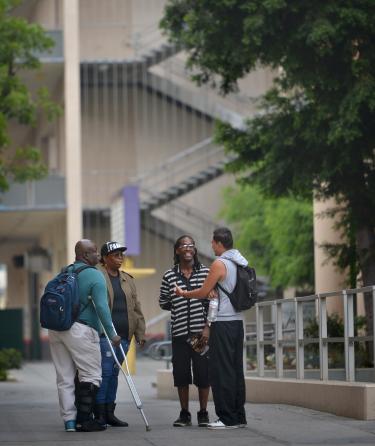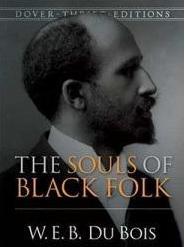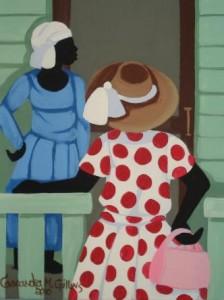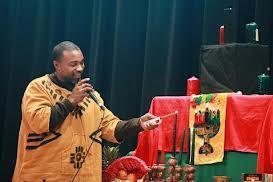Culturally Responsive Pedagogy
Dr. Ladson-Billings (1994) recognizes the importance of including students' cultural references in all aspects of learning. One goal, shared by the Umoja Community, of culturally responsive education is to potentially impact the self-concept, esteem, motivation and resiliency of historically underachieving students (Thompson, 2004).
Culturally responsive practices are used in Umoja Community programs as a vehicle for creating a strong sense of community among the students, faculty and staff. Within this context, students experience a sense of self-efficacy and engagement; they begin to visualize their own success in higher education knowing that their classmates and instructors want them to succeed. Umoja Community students crave this environment and respond with tremendous enthusiasm.
Selected Bibliography
- Asante, M. K. (1980). Afrocentricity: The theory of social change. Buffalo, NY: Amulefi.
- Asante, M. K. (1991). The Afrocentric idea in education. The Journal of Negro Education, 60(2), 170–180.
- Gay, G. (2000). Culturally Responsive Teaching: Theory, Research, & Practice. New York: Teachers College Press.
- Ginsberg, B. M., & Wlodkowski, J. R. (2009). Diversity and motivation: Culturally responsive teaching in college. San Francisco: Jossey-Bass.
- Howard, T.C. (2003). Culturally Relevant Pedagogy: Ingredients for critical teacher reflection. Theory Into Practice, 42(3), 195-202.
- Jensen, R. (2005). The Heart of Whiteness: Confronting race, racism, and white privilege. SF: City Lights.
- Ladson-Billings, G. (n.d.). But that’s just good teaching: The case for culturally relevant pedagogy. Theory Into Practice, 34(3), 159-165.
- Ladson-Billings, G. (1998). Teaching in Dangerous Times: Culturally Relevant Approaches to Teacher Assessment. The Journal of Negro Education., 67(3), 255
- Ladson-Billings, G. (1995). Toward a Theory of Culturally Relevant Pedagogy. American Educational Research Journal, 32(3), 465-491.
- Ladson-Billings, G. (1996). “Your Blues Ain’t Like Mine”: Keeping Issues of Race and Racism on the Multicultural Agenda. Theory into Practice., 35(4), 248
- Ladson-Billings, G. (1997). It Doesn’t Add Up: African American Students’ Mathematics Achievement. Journal for research in mathematics education. 28(6), 697.
- Ladson-Billings, G. (1999). Preparing Teachers for Diverse Student Populations: A Critical Race Theory Perspective. Review of Research in Education, 24, 211.
- Ladson-Billings, G. (2000). Fighting for Our Lives: Preparing Teachers to Teach African American Students. Journal of Teacher Education, 51(3), 206-214.
- Ladson-Billings, G. (2003). Its Your World, Im Just Trying to Explain It: Understanding Our Epistemological and Methodological Challenges. Qualitative Inquiry, 9(1), 5-12.
- Traore, R. (2007). Implementing afrocentricity: Connecting students of African descent to their cultural heritage. The Journal of Pan African Studies, 1(10), 62-78.
- Villegas, A. M. (1991). Culturally Responsive Pedagogy for the 1990s and Beyond. Washington, DC: ERIC Clearninghouse on Teacher Education.
- Walker, V. (1996). Their highest potential: An African American school community in the segregated south. Chapel Hill: University of North Carolina Press.



